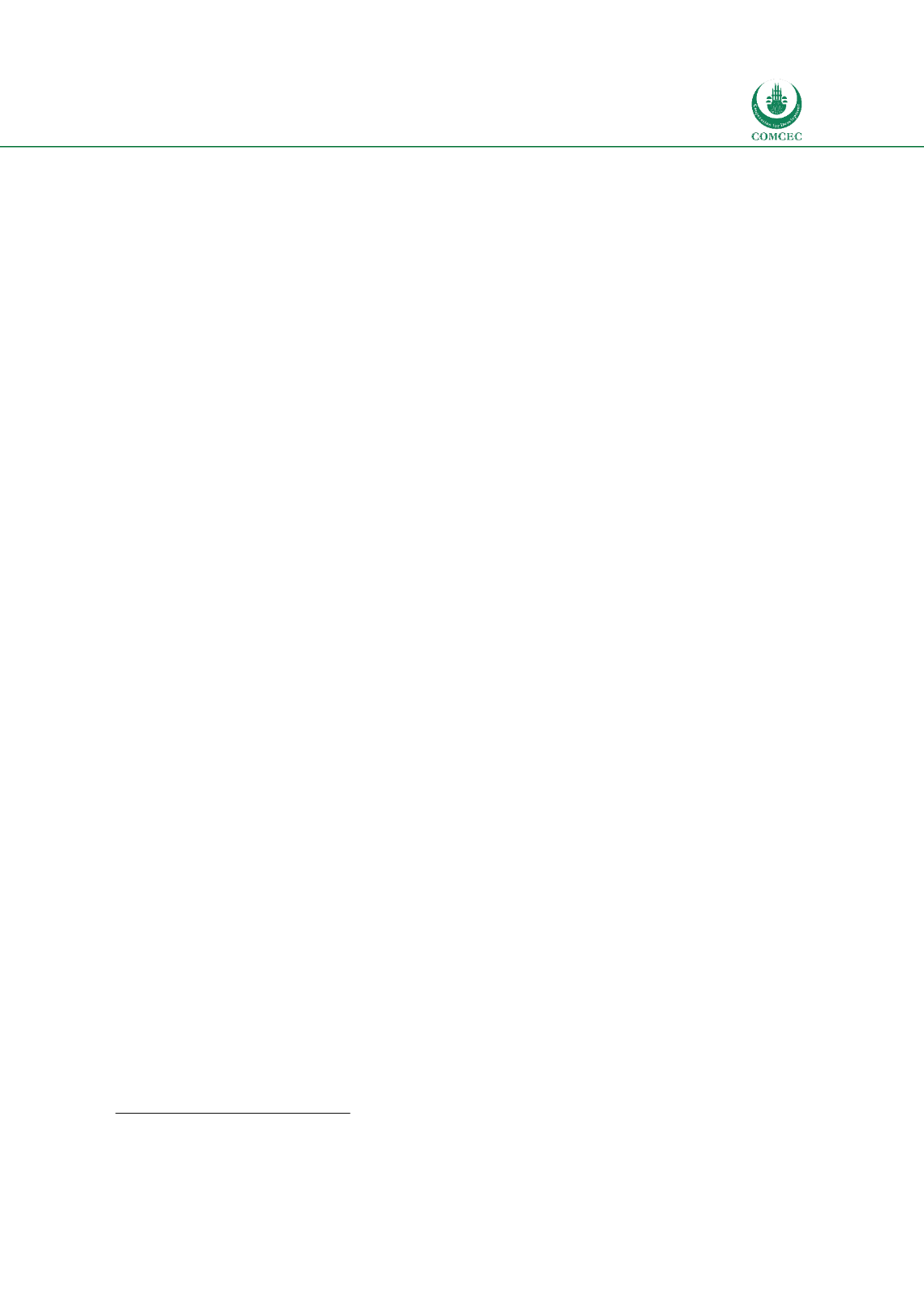

National and Global Islamic Financial Architecture:
Prolems and Possible Solutions for the OIC Member Countries
161
4.12.3 Shariah Governance Framework
Article 6 of
Article 1 of Federal Law No. 6 of 1985 stipulates that the Articles and
Memorandum of Association of Islamic financial institutions must provide for the
establishment of a Sharia
committee of not less than three persons who will ensure the
adherence by such companies to Sharia
principles in their operations and contracts. There is
no specific Shariah governance framework required by licensed Islamic banks, takaful or
Islamic capital markets institutions.
The law does not provide the terms of reference for the
Shariah Supervisory Boards (SSBs) at the Islamic financial institution (IFIs) level and leaves it
to IFIs to decide on by incorporating these in their respective articles of association.
As per Article 5 of the aforementioned Law, the appointment of the relevant Sharia
committee
within each of these companies is subject to the approval of a Higher Sharia Authority attached
to the Ministry of Justice and Islamic Affairs
(Al Tamimi & Company 2016), although the Higher
Sharia Authority does not exist yet. However, it was indicated that the Central Bank intends to
establish the Higher Sharia Authority in the near future (WAM, 2015).
IA Takaful Insurance Regulations (IA 2010) stipulate the formation of a Supreme Fatwa and
Shariah Control Committee within the Insurance Authority (Article 17) and provides details of
forming a Shariah Control Committee at takaful companies. Other than requiring takaful
companies to have by-laws for the committee and also have a Sharia controller, the regulations
cover issues related to the formation of the committee, conditions of committee membership,
powers and authorities of the committee and the committee’s annual report. There are
Sharia
Standards for Sukuk issued by the Dubai Financial Market (DFM) (DFM, 2013).
On the other
hand,
there are Sukuk Regulatory Standards issued by SCA (SCA 2014).
The regulatory authorities do not require IFIs to use IFSB/AAOIFI Sharia governance
guidelines. UAE does not require Islamic financial institutions to use AAOIFI Sharia standards.
4.12.4. Liquidity Infrastructure
In the aftermath of the global financial crisis, the Central Bank has taken some measures to
address the liquidity issues in the UAE banking sector. Some specific initiatives include
launching an AED 50 billion repo facility for banks and a subscription of USD10 billion in a
government of Dubai bond issue
(Khan and Walker, 2010, 588). However, th
ere is no
institutional liquidity management framework (i.e. markets and arrangements) for Islamic
financial institutions
per se
. IFIs have taken initiatives themselves to come up with interbank
money market arrangements. This non-regulated framework uses liquidity management
instruments and products such as overnight commodity murabaha and Islamic repo.
38
Given
the above, adequate Shariah compliant instruments that can meet the requirements of
Liquidity Coverage Ratio (LCR) that fulfill the High Quality Liquid Assets (HQLA) do not exist.
There are no specific rules that govern LLOR facilities for Islamic financial institutions.
However,
wakala
and
mudaraba
-based structures were developed due to the fact that the fiscal
policy of the country required the Central Bank to provide support for all IFIs in 2009 when the
global financial crisis occurred.
In 2011, the Central Bank came up with a Collateralized
38
The source of information is from interviews of market participants.
















